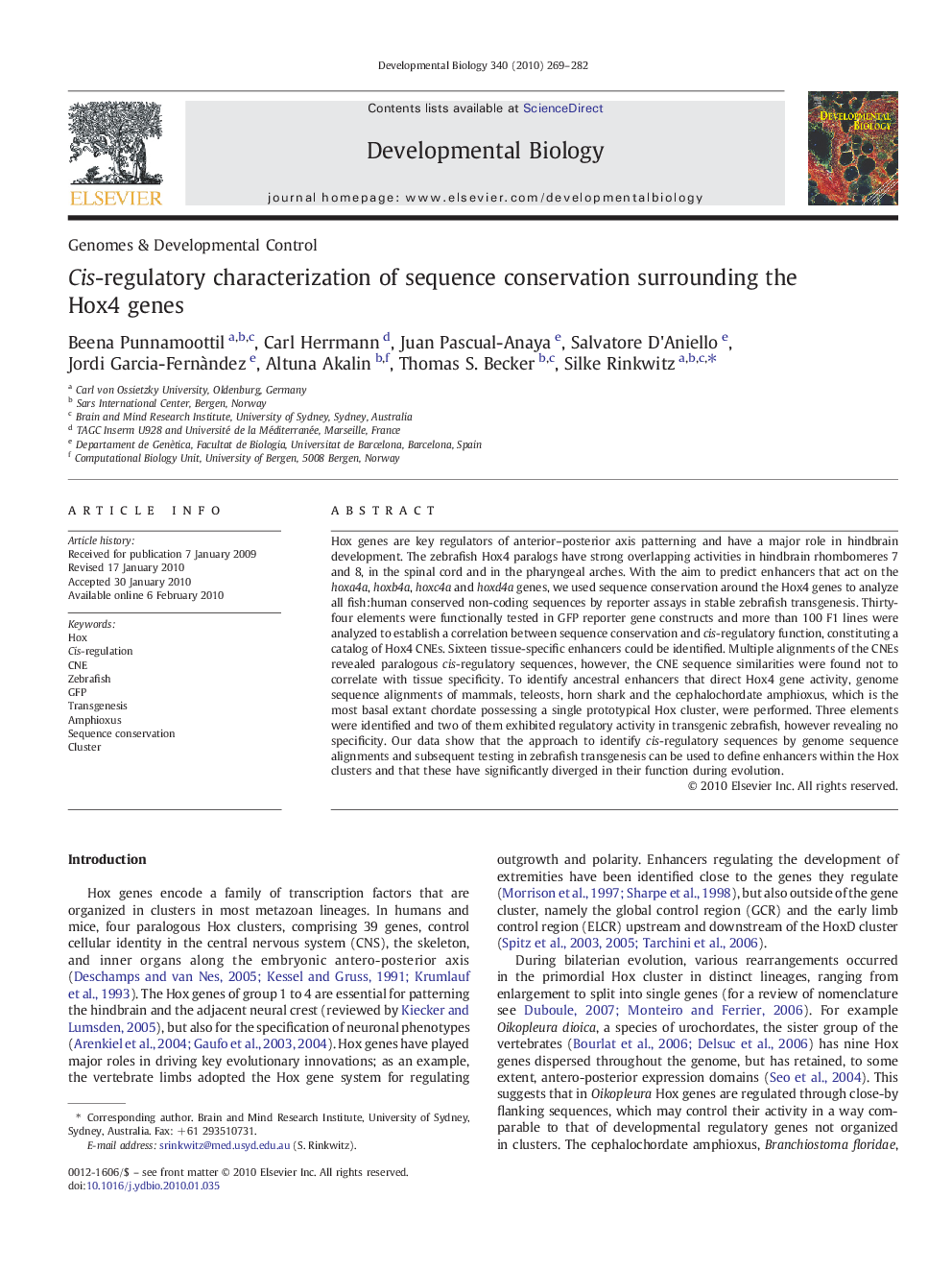| Article ID | Journal | Published Year | Pages | File Type |
|---|---|---|---|---|
| 8468242 | Developmental Biology | 2010 | 14 Pages |
Abstract
Hox genes are key regulators of anterior-posterior axis patterning and have a major role in hindbrain development. The zebrafish Hox4 paralogs have strong overlapping activities in hindbrain rhombomeres 7 and 8, in the spinal cord and in the pharyngeal arches. With the aim to predict enhancers that act on the hoxa4a, hoxb4a, hoxc4a and hoxd4a genes, we used sequence conservation around the Hox4 genes to analyze all fish:human conserved non-coding sequences by reporter assays in stable zebrafish transgenesis. Thirty-four elements were functionally tested in GFP reporter gene constructs and more than 100 F1 lines were analyzed to establish a correlation between sequence conservation and cis-regulatory function, constituting a catalog of Hox4 CNEs. Sixteen tissue-specific enhancers could be identified. Multiple alignments of the CNEs revealed paralogous cis-regulatory sequences, however, the CNE sequence similarities were found not to correlate with tissue specificity. To identify ancestral enhancers that direct Hox4 gene activity, genome sequence alignments of mammals, teleosts, horn shark and the cephalochordate amphioxus, which is the most basal extant chordate possessing a single prototypical Hox cluster, were performed. Three elements were identified and two of them exhibited regulatory activity in transgenic zebrafish, however revealing no specificity. Our data show that the approach to identify cis-regulatory sequences by genome sequence alignments and subsequent testing in zebrafish transgenesis can be used to define enhancers within the Hox clusters and that these have significantly diverged in their function during evolution.
Related Topics
Life Sciences
Biochemistry, Genetics and Molecular Biology
Cell Biology
Authors
Beena Punnamoottil, Carl Herrmann, Juan Pascual-Anaya, Salvatore D'Aniello, Jordi Garcia-Fernà ndez, Altuna Akalin, Thomas S. Becker, Silke Rinkwitz,
